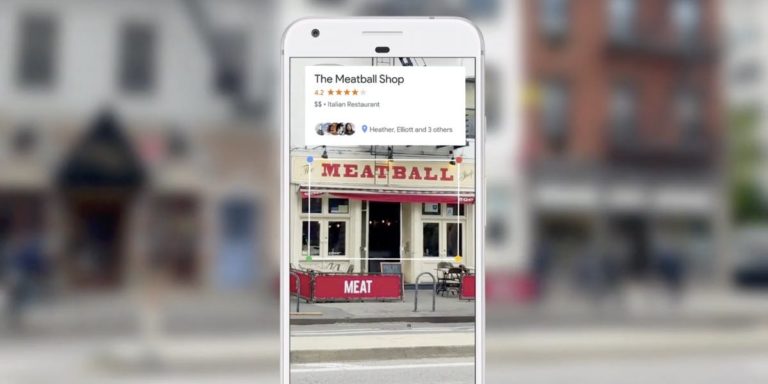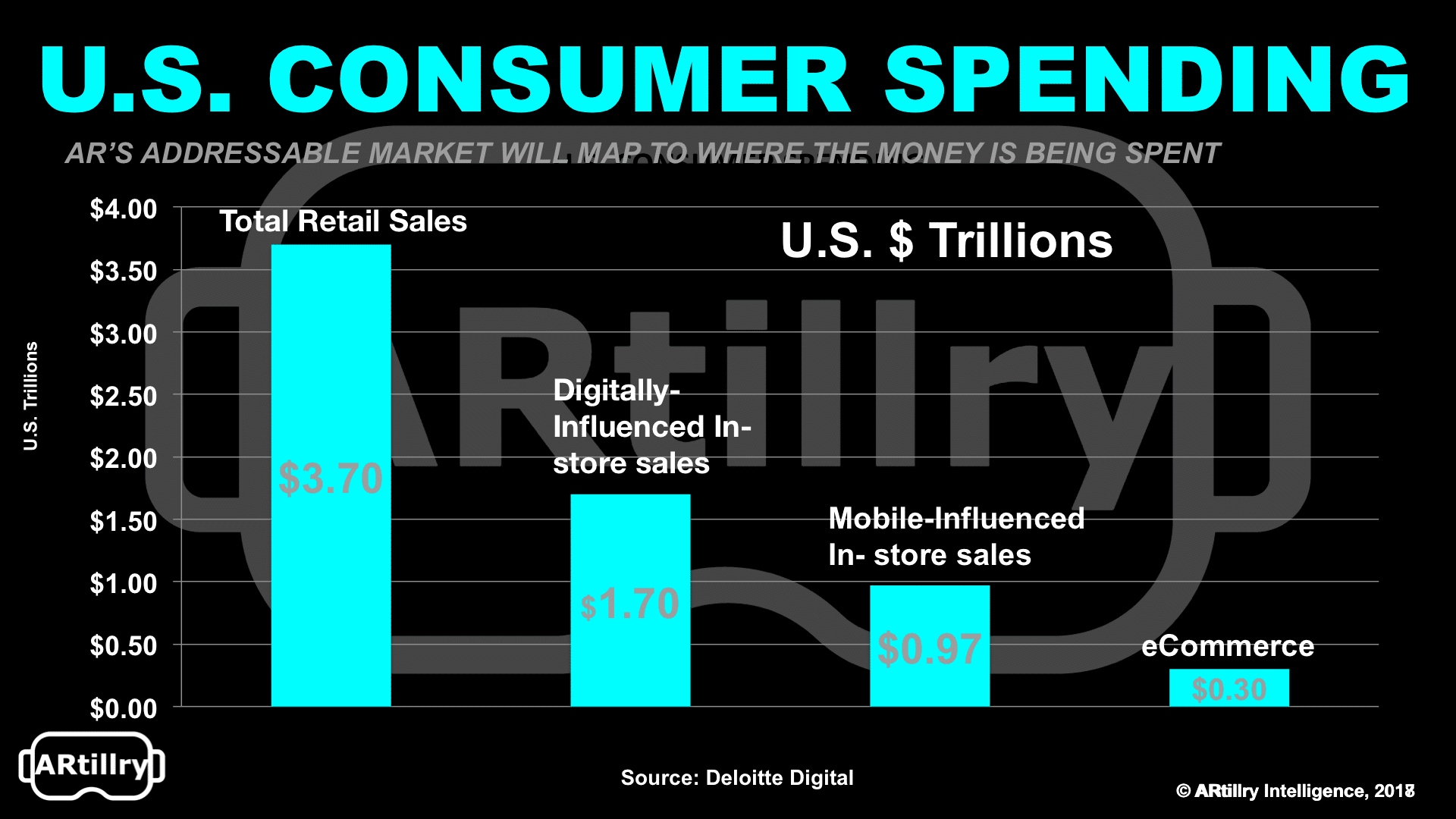
It’s often forgotten that about $3.7 trillion is spent in U.S. consumer retail purchases. Of that total, $300 billion (8 percent) is spent in e-commerce. This means that offline brick & mortar spending – though often overshadowed by its sexier online counterpart – is where the true scale occurs.
But digital media like mobile search is still impactful. Though spending happens predominantly offline, it’s increasingly influenced online. Specifically $1.7 trillion (46 percent of that $3.7 billion) is driven through online and mobile interactions. This is known as online-to-offline (O2O) commerce.
O2O is one area where AR will find a home. Just think: is there any better technology to unlock O2O commerce than one that literally melds physical and digital worlds? AR can shorten gaps in time and space that currently separate those interactions (e.g. search) from offline outcomes.

We’re talking contextual information that influences consumer spending. It’s AR overlays that help you decide where to eat, which television to buy, and where to find the shoes you see someone wearing on the street. This is what we call “Local AR,” and it will take many forms.
One of the first and predominant formats where Local AR will manifest is visual search. If you think about it, AR is another form of search. But instead of typing search queries in the traditional way, the search input is your phone’s camera and the search “terms” are physical objects.
This analogy applies to many search types, but is particularly fitting to local. Traditional (typed) local search performs best when consumers are out of home, using their smartphones. This is when “buying intent” — and thus click-through-rates and other metrics — are highest.
These proximity-based searches are conducive to AR because the phone is near the subject (think: a restaurant you’re walking by), and can derive information and context after mapping it visually. This really just makes it an evolution of a search query… but done with the camera.

Furthermore, proximity-based visual searches through an AR interface could gain traction among consumers if our recent survey research is any indication. Among the different categories and types of AR apps that consumers want, city guides showed strong demand (see above).
“A lot of the future of search is going to be about pictures instead of keywords,” Pinterest CEO Ben Silberman said recently. His claim triangulates several trends such as millennials’ camera use, mobile hardware evolution, and AR software like ARkit, which further empowers that hardware.
Stay tuned for more on this topic, including the next ARtillry Intelligence Briefing that will examine AR’s local commerce opportunities, the AR Cloud and what will become an “internet of places.”
For a deeper dive on AR & VR insights, subscribe to ARtillry Intelligence Briefings, and sign up for the free ARtillry Weekly newsletter.
Disclosure: ARtillry has no financial stake in the companies mentioned in this post, nor received payment for its production. Disclosure and ethics policy can be seen here.
